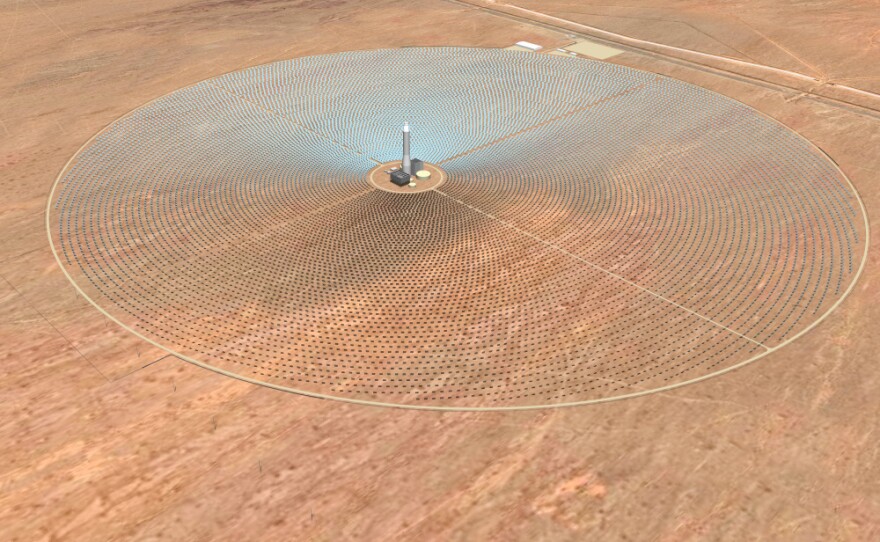New revelations continue to surface about the Obama administration's handling of half a billion dollars in federal loan guarantees to the now-bankrupt solar company Solyndra.
On Monday, Democrats released a memo that showed some voices inside the White House argued against President Obama's visit to Solyndra in May 2010.
But Solyndra was just one of the clean energy projects and businesses that got loan guarantees from a Department of Energy program that ended Friday. In all, it financed 28 projects with $16 billion in loan guarantees. The Energy Department says the projects will create about 17,000 construction and permanent jobs.
Rep. Cliff Stearns (R-FL), who chairs an energy and commerce subcommittee on oversight and investigations, originally supported the program when Congress created it.
Now he says, "I think the administration is putting taxpayers' money at risk in areas that are not creating jobs."
Stearns says he is "hugely critical" of how loans in the program have been handled. He says they were rushed out the door.
"We asked them to hold up any more loan guarantees so that they could be looked at more carefully, so we don't have any more Solyndras," he says.
A 'Pretty Brutal' Process
For its part, the Department of Energy denies rushing its processes — or playing politics. Over the weekend, Energy Secretary Steven Chu defended the loan program, saying the United States could not afford to give up investing in new energy technologies.
Kevin Smith, a CEO of SolarReserve, which is building a 2-mile-wide solar power generator in Tonopah, Nev., calls getting an Energy Department loan guarantee the most exhaustive vetting process he's been through in 25 years of working in energy.
"It was a pretty brutal due diligence process," Smith says.
The process took two years.
"Down to the level — I mean, I had questions [such as], 'Kevin, you went to Sacramento on the 17th of February. Was that trip related to the Tonopah project?' You know, it's a $500 issue," Smith says.
SolarReserve received its $737 million loan earlier this month. Smith says he turned to the government because banks and private lenders simply were not lending enough for a project of this scale.
But he also says that doesn't mean his project is a risky investment for the taxpayer. SolarReserve is using a proven technology and already has a 25-year contract with a utility company.
"It's like us building a hotel and we've sold out 100 percent of the rooms for 25 years when we start construction," he says.
Informing The Debate
In fact, 16 of the 28 loan guarantees the Energy Department approved are for power generation projects like SolarReserve's. They have long-term contracts with utility firms or are subsidiary projects of utility companies.
That's why Rhone Resch, who heads the Solar Energy Industries Association, says the debate over what happened at Solyndra cannot inform the debate about clean energy investment overall.
"It's improper to view the entire industry through the lens of one failed company," he says.
Resch adds that in the past two years, solar companies have doubled their employment to 100,000 people.
"We're putting electricians, roofers and plumbers back to work in the solar industry after they've been let go by the housing industries," he says.
When Stearns, the Republican hosting the hearings on Solyndra, was asked about the seemingly low-risk revenue models of many of the loan guarantee recipients, he acknowledged those might be safer bets. But he still doesn't like the idea of government putting taxpayers on the line for other ventures.
"We can't compete with China to make solar panels and wind turbines," Stearns says.
He says he doesn't believe in any type of subsidy for industry. And, he says, where solar is concerned, it makes more sense to invest in research and development on a technology where the U.S. still has a chance of winning.
Copyright 2022 NPR. To see more, visit https://www.npr.org. 9(MDAzMjM2NDYzMDEyMzc1Njk5NjAxNzY3OQ001))







